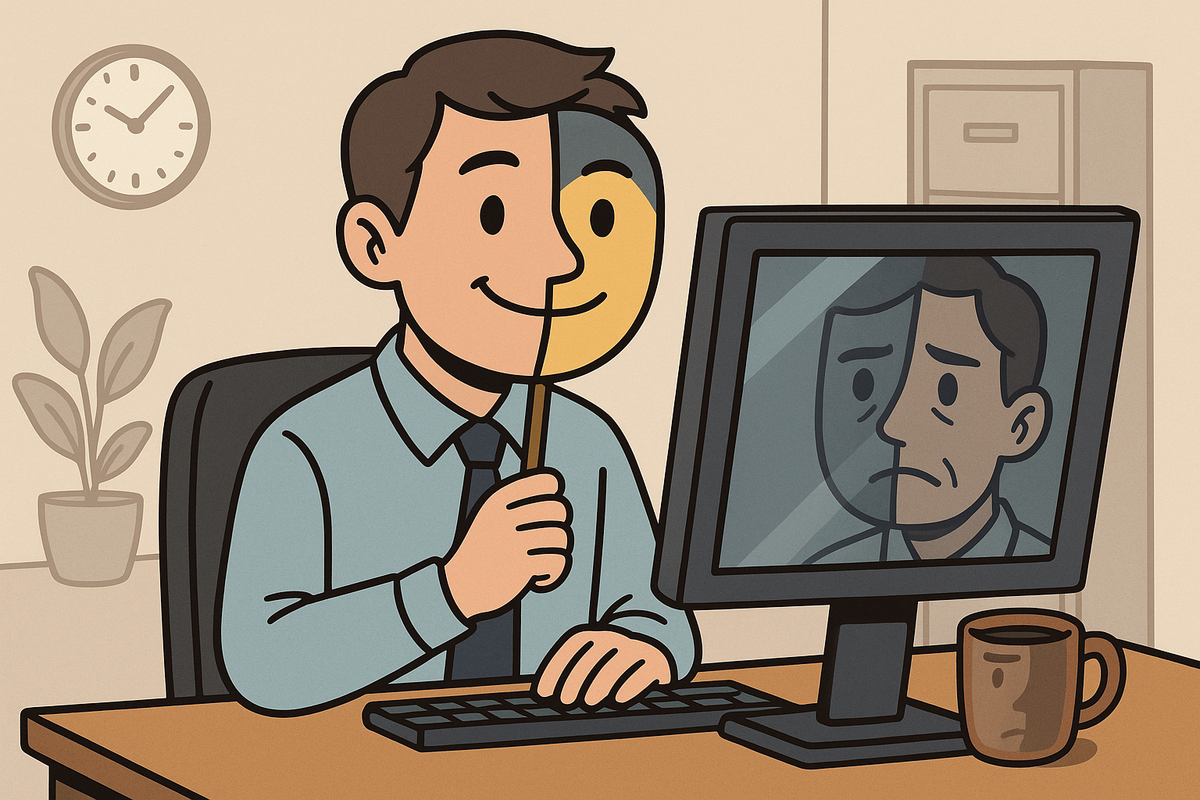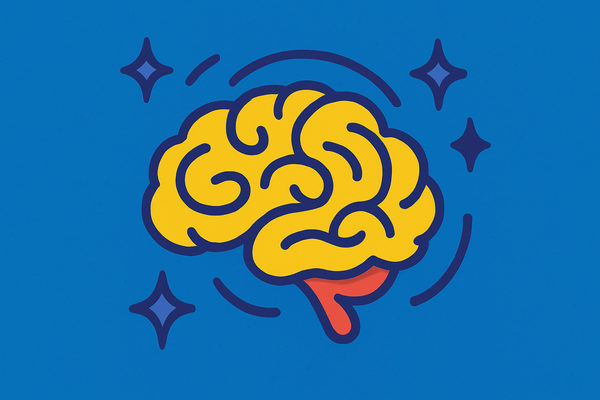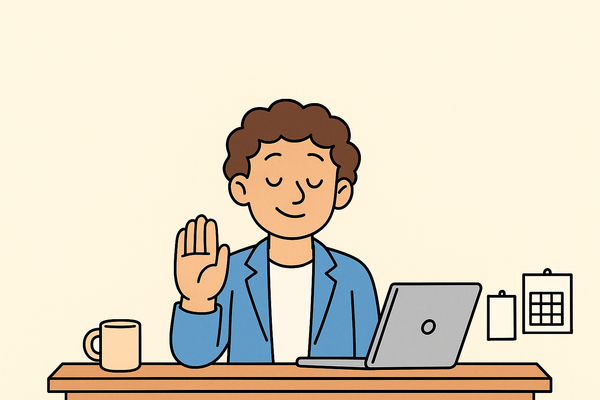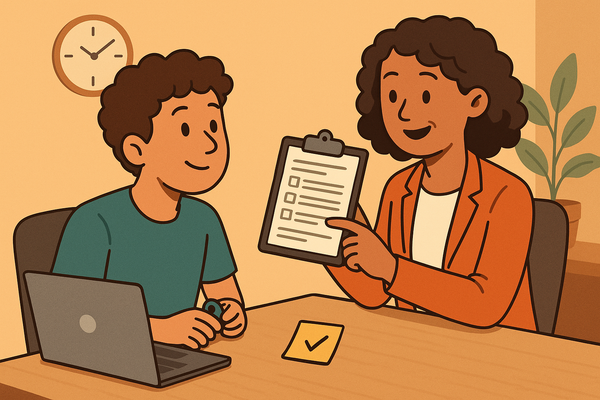The Hidden Cost of ADHD Masking at Work

I used to be the person who showed up to meetings fifteen minutes early, not because I was particularly punctual, but because I’d learned that arriving “on time” for me usually meant bursting through the door three minutes late, slightly out of breath, with my laptop bag half-open and an apologetic expression that screamed “sorry, my brain happened again.”
So I overcompensated. I set alarms for my alarms. I rehearsed casual responses to simple questions. I became a master at nodding thoughtfully during long presentations while my mind ping-ponged between grocery lists, that thing I forgot to send yesterday, and whether anyone could tell I was internally combusting.
This is ADHD masking at work, and if you’re reading this, chances are you know exactly what I’m talking about.
What ADHD Masking Really Looks Like
Masking isn’t just “acting normal” — it’s an exhausting performance where you’re constantly monitoring yourself, adjusting your behavior, and burning through mental energy like a phone with a broken battery.
It’s arriving early because you can’t trust your time blindness. It’s over-preparing for every meeting because you’re terrified of that moment when your brain goes blank. It’s saying “great question” when someone asks you something, buying yourself three seconds to frantically search your scattered thoughts for an answer that sounds professional.
It’s keeping your office door closed so no one sees the chaos of papers, the seventeen browser tabs, or the fact that you’ve been staring at the same email for twenty minutes because your brain decided today we’re not doing words.
The Performance That’s Killing You
Here’s what I wish someone had told me years ago: that carefully constructed professional persona you’ve built? It’s probably working. Your colleagues might think you’re organized, detail-oriented, maybe even naturally calm under pressure.
But you know the truth. You know that “organized” means having seventeen different systems that you abandon and restart every few months. You know that “detail-oriented” means obsessively checking your work because you caught a mistake once and now you’re convinced you’re one typo away from being found out.
The cruel irony is that the better you get at masking, the more invisible your struggles become. When you’re working twice as hard to appear “normal,” people assume work comes easily to you. They give you more responsibility, tighter deadlines, additional projects — because you seem to handle everything so well.
Meanwhile, you’re drowning in a way that’s completely invisible to everyone around you.
Like what you’re reading? Get weekly ADHD news, tools, and creative strategies delivered straight to your inbox.
Why We Do It (And Why It Makes Sense)
Before we go any further, let me be clear: masking isn’t a character flaw or something you should feel guilty about. It’s a survival strategy that developed for good reasons.
Maybe you learned early that being “too much” had consequences. Maybe a teacher once said you were “careless” or “not applying yourself.” Maybe you watched other kids get praised for sitting still and following directions while you got side-eyes for fidgeting or asking too many questions.
The workplace doesn’t exactly roll out the red carpet for neurodivergent brains either. Open offices assault your sensory system. Meeting-heavy cultures punish your need for processing time. Everything moves at a pace that assumes your brain works like everyone else’s.
So you adapt. You learn to sit still in meetings even when your nervous system is screaming for movement. You master the art of looking engaged during presentations that make your brain feel like static. You become fluent in corporate speak, even though every email feels like translating a foreign language.
It’s smart. It’s strategic. And it’s slowly burning you out from the inside.
The Real Cost
The research on ADHD masking is still catching up to what many of us have lived for years, but what we’re learning isn’t pretty. Constant masking is linked to:
Mental and emotional exhaustion. When you’re using most of your mental energy to appear neurotypical, there’s nothing left for the actual work. You’re tired in a way that sleep doesn’t fix.
Increased anxiety and depression. Living in fear that someone will discover you’re “faking it” creates a baseline of anxiety that follows you everywhere. The gap between who you really are and who you pretend to be can feel devastating.
Delayed diagnosis and treatment. When you’re too good at hiding your struggles, even healthcare providers might miss the signs. Women, especially, often don’t get diagnosed until they’re completely burnt out because we’ve gotten so good at looking fine.
Imposter syndrome on steroids. When your professional success feels like an elaborate performance, it’s nearly impossible to internalize your achievements. Every promotion feels undeserved. Every compliment feels like evidence that you’ve successfully fooled someone.
What Unmasking Looks Like
I’m not going to tell you to just “stop masking” — that’s not realistic or fair. But there are ways to slowly, carefully start showing up more authentically at work.
Start small and strategic. Maybe it’s using a fidget toy during video calls. Maybe it’s asking for agendas in advance or requesting written follow-ups after verbal instructions. Pick one accommodation that would genuinely help and test the waters. (If you’re considering having the workplace accommodation conversation, here’s guidance on navigating that with your boss.)
Find your people. Look for colleagues who seem comfortable being human at work — the ones who admit when they’re overwhelmed or ask clarifying questions without apologizing. These might be your allies in creating a more authentic work environment.
Reframe your “quirks” as strengths. That hyperfocus that makes you lose track of time? That’s also what lets you dive deep into complex problems. That brain that jumps between ideas? That’s innovation in action. Start identifying the superpowers that come with your neurotype.
Set boundaries around your energy. You have a finite amount of mental energy each day. Start protecting it like the valuable resource it is. This might mean blocking focus time on your calendar or limiting back-to-back meetings. On days when your brain feels foggy, try using a Focus Menu approach instead of forcing yourself through rigid to-do lists.
The Path Forward
The goal isn’t to completely unmask overnight — that’s not safe or practical for most of us. The goal is to reduce the gap between who you are and who you feel you have to be at work.
Some days, you’ll still need to perform. Some meetings will require your best neurotypical impression. That’s okay. The difference is choice. When you’re conscious of when and why you’re masking, it becomes a tool rather than a prison.
Your ADHD brain isn’t broken, and it doesn’t need to be hidden. It needs to be understood — by your colleagues, by your managers, and most importantly, by you.
The world needs what your brain brings to the table: the creativity, the innovation, the ability to see connections others miss. But it needs the real version, not the exhausted performance of someone pretending to be someone else. (For a deeper look at how ADHD success might look different than you expect, check out this reflection on 25 years in design.)
You’re not too much. You never were. And the right workplace will recognize that your differences aren’t deficits — they’re exactly what’s been missing.




